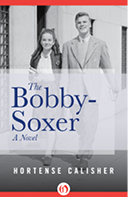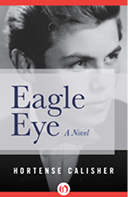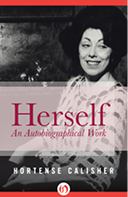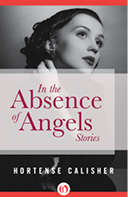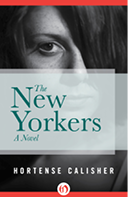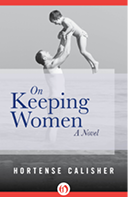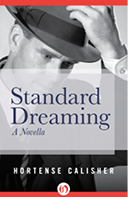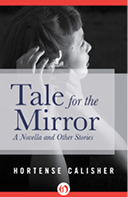Herself (55 page)
Authors: Hortense Calisher

In this country, there is always a possibility that the constant fund of Comstockery may again find its senators (or its President), and we shall all be happily censored into old fashioned rebellions again, but it is hard to visualize. Since the Learned Hand decision on
Ulysses
there has been no seriously successful overt censorship in the literary centers of the country, let the local folklores go on as they will. (What with the movies, it is still harder to see how they can.)
Censorship, or the lack of it, certainly shapes literature; one might even note—if only in a low voice and to well-wishers—that literature has been known to thrive under its restraints. But they
must
be open ones. In my own time, the most powerful censor I have lived under or near, has been political. A
The Cancer Ward
can come of that. Covert restrictions, such as women are under, can only cripple—in the arts or anywhere else. They can determine one’s scope. For a woman writer, in the place where it hurts most—by restricting her self-awareness of’ what her life possibilities really are. For it is one’s sense of one’s life possibilities that feeds imaginative work.
Yes, the literary establishment, back and front, is still as predominantly male as all the others, yet it has always seemed to me that writers of any sex are stupid to strive for that kind of power, in what for them can never be an a priori world. Because the power belongs in the book. To fight to the death for the right to say what I dare—yes—that is tonic, because it is basic. It is
my
kind of vote. To climb any of the more ordinary corridors of power in the literary world is to risk what any climber does—smallness of mind. It produces no
Areopagitica
. What would enlarge me as a writer is what would enlarge any woman, any man, anyone—the right to do and be, without scorn or sneer. The stretching of the flesh produces a stretching of the Word. In a world of astronauts, a Russian woman is born free to be one. In a world of presidents and premiers, the mesdames Ghandhi and Meir exist. That enlarges me, and all women everywhere. But I
write
in America.
If sex and politics now cross there, as they do, I take this as hopeful, as a sign of the country’s slow recognition that the components of life do cross, and that sex is rarely ever sex alone. When anything gets freed, a zest goes round the world. What is most evident is that the old dictionary distinction between “license” and “freedom” doesn’t do any more. As the Jew had come to know—and the blacks and the queers are now showing us, inside literature and out—“Freedom” is what you are given—and its iron hand often remains on your shoulder. “License” is what you
take.
So I put away what I had written. Sometime later, I began a book. Once or twice, over a page, I startled myself with my own hooted laughter, something I had never done before. Sex, for me, had always had room in and around it for generous laughter. But my generation was not geared to see irony or fun in politics. I was finding the current blend of the two an irresistible burlesque.
The book was called
Queenie
. What I had written—I see now—was the preface to it.
E
ACH STAGE OF
my life has seemed to me somehow an ascent, and a surprise—since here in my country one is supposed to decline toward the grave at an acute angle, as everything in its popular civilization foretells. What has made this possible for me has been my peculiar “work,” to which I have been as happily doomed as one of those children born with a religious sect, whom one sometimes glimpses on television, obscure and protected, for a time. When a child myself, I already knew I was a grudging one, thoughtless of others, yet as sensitive as if I had shingles all over, nursing all the ambitions of the envious but too easily humiliated to try my wings. In my adolescence, it was hard for me to give presents; I “forgot.” Yet in the picture of me, one can see something—receptive. More open than watching, though a watcher I surely was. Waiting, rather, as if there is to be something more. There is a picture of me like that at the age of nine or ten, under the high crown and round brim of a hat that the grown have put on me, holding the reins of a pony that is not my own. I still know the feel of that cape I’m wearing. And I know that child’s fortune. To be seized by work, and led through it to many loves. Perhaps the endpapers of this book, now that I’m closing it, should pose that early picture against the late one the publisher will require of me, underneath each the same invisible title: Waiting For More.
It’s not death itself that I wait for. Though I expect it too will be a surprise, nothing in my heritage has taught me to await it naturally. Nothing, surely in my country, whose citizens scatter impersonal death farther than Johnny Appleseed his pips, yet to a man, and to a woman, stand affrighted to a sort of ghosthood before their time—of the personal one. No Jews I have known have been non-neurasthenic about death; whatever remains of their orthodoxy shines with the virtues of a non-acceptance which may have helped to bring them notably far in history, but does not console. As for their modern philosophies, these so far are stillborn; one may honor Buber, but find it hard to believe in the people who say they believe in him. Probably my Southern inheritance, foolish and stoic (scan how it still adheres to the gun!), looks death in the eye best—but I haven’t much of it left in me.
I came on the scene, however mixed of heritage and in whatever proportion of these, half of me still from an age and a century whose thinkers, and even its bourgeoisie, took for granted (much though they talked about it) the presence in their lives of a certain rationale which no longer counts for much to my countrymen at large, or to much of a world under their influence. Call it an aesthetics of
conduct
.
History has seen so many of these, often separable even from parallel notions of “right” and “wrong.” Courtly love in the middle ages, Spartan infanticide, Japanese
seppuku
—all those rituals where violence, masking as custom or honor, or even racial necessity, made use of death-attraction. The way of the pantheist or the Buddhist is milder, but still death-embracing. Western religion may see death as the door to the after-life, but doesn’t much live with it. Yet one may have an aesthetic of conduct apart from any of these. Call it a sense of form, applied to life. One models one’s life in the shape of something. I suspect that is what this book is about.
Any of us born in the first half of a century are in touch with the preceding one. The nineteenth century, as it left off conducting itself under the eye of Mrs. Grundy and God, or in that unholy alliance of both which confused form with conformity, bequeathed us the malaise of a noblesse gone a-wandering—how to model one’s life when God is dead, as well as all the other noblemen? At least, our talk is that we are left with only the ordinary urges, to sex and politics, luxury and war. And to art too, of course. To any of which we engage ourselves only realistically, we assume—and without wonder.
Yet as far back as written work exists, one can read complaints of the shallowness of “modern” life. Nothing but death has ever put an end to that. Not all the deaths behind us have ever stopped our urge to find a light in life-as-lived—the urge toward an exemplary life, or a satisfied one. Toward—within the limits of eternity—a shapely one. Resolved.
As I have been writing the confessive side of this book, I had been thinking of death, taking my own more for granted, as one learns to do in middle life, and brooding more and more on the death of the race, as we have all learned to do. No doubt thinking of the one, helps us not to think of the other; much of our mental life, or of mine, is not repression but evasion.
The great lyric time for death-think is youth, when the concept is new but far. Or it used to be. The second great time is late middle age, when the friends begin to drop and one’s own armatures to loosen, when the idea is old and near. Perhaps old age grows literally numbed toward death, or half easefully in love with it, or learns better to live with the blessings of the day—and perhaps without meditation, rather than with it. The rounded elderly posture, those seamed faces that we take for inward ones, may mean entirely something else; surely there is some process, for I have never met a very old person who seems death-scared—even in America.
Often now though, the young here seem older than many of the rest of us. One day, it crosses my mind that perhaps the race itself is now
physically
middle-aged. So this book too, along with the private happenings that accompany it, has led me to another. In the deadheat of summer, I leave it, to sweat over the new one at this same desk, a novel I call
Standard Dreaming.
When I return here—to the landscape I have laid but in this book, the row of impatience plants ranged along this balcony window, common to both of them, are in another growth, pink now against snow. They are like the relationship between the two books—seasonal and mysterious.
This book was begun just when we came to live in the house; carried back and forth with me to and from the city, in my mind it is half a country book. Though I have often “repaired to the country” in the last decade, it has been years since I have lived there, as now. Early our first winter, we saw the barn owl; he sat treed between snowy sky and deeper ground-drift like a buff-and-white waterfall in a drawing of Fuji. That was at the bedroom window. One dusk not long after, we saw a fox streak across the dark lawn like an orange lariat being cracked from above. That was in the sitting-room. Both owl and fox are said still to live here; though we no longer see them, we live somehow between. Now and then I think of how a book might be written in that space, to satisfy both of them, cold and simple yet with a wave of orange in it—a book written for the owl and the fox. Whatever, it is clear that I am leaving this one.
How does one “finish” an account of one’s life? I suppose one does that best when one intends to write no more. I have not yet engaged for that. Autobiography is often an excuse for not going on any more, along the path of whatever one has done that might make people want to read of it. I can’t conclude myself like that. Not yet. But this book has its conclusions, some still projecting for me, half unknown. One, I can see clearly. Perhaps my own process is not so much my own as I thought, nor even one that only artists know—but one that we share with other Americans, other
people
. Less and less do I see any gap—in the process of us all.
Yes, my book is my blood. But all those currents in me which I have for so long kept separate, begin to seem to me no longer so. This book has pushed that on. The book and the writer, the novel and the history, the autobiography and the biographer, the journalism and the poem, no longer seem so far from one another as they used to do. It seems all—our blood.
When you come to the end of the past—no more peroration. Tolerate life—a poem which annoys when it falls into grandeur. The past will come round again.
Until death do us part, then. Or I know your name.
About the Author—New York, March, 1972
Hortense Calisher (1911–2009) was born in New York City. The daughter of a young German-Jewish immigrant mother and a somewhat older Jewish father from Virginia, she graduated from Barnard College in 1932 and worked as a sales clerk before marrying and moving to Nyack, New York, to raise her family. Her first book, a collection of short stories titled
In the Absence of Angels
, appeared in 1951. She went on to publish two dozen more works of fiction and memoir, writing into her nineties. A past president of the American Academy of Arts and Letters and of PEN, the worldwide association of writers, she was a National Book Award finalist three times, won an O. Henry Award for “The Night Club in the Woods” and the 1986 Janet Heidinger Kafka Prize for
The Bobby Soxer
, and was awarded Guggenheim Fellowships in 1952 and 1955.
All rights reserved, including without limitation the right to reproduce this ebook or any portion thereof in any form or by any means, whether electronic or mechanical, now known or hereinafter invented, without the express written permission of the publisher.
Copyright © 1972 by Hortense Calisher
Cover design by Kelly Parr
978-1-4804-3902-3
This edition published in 2013 by Open Road Integrated Media, Inc.
345 Hudson Street
New York, NY 10014



